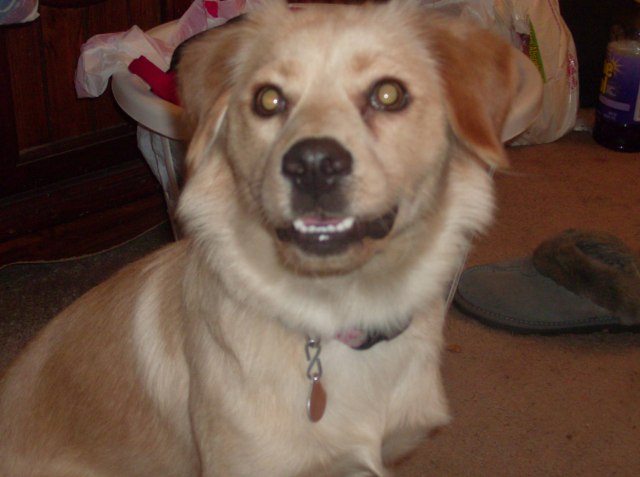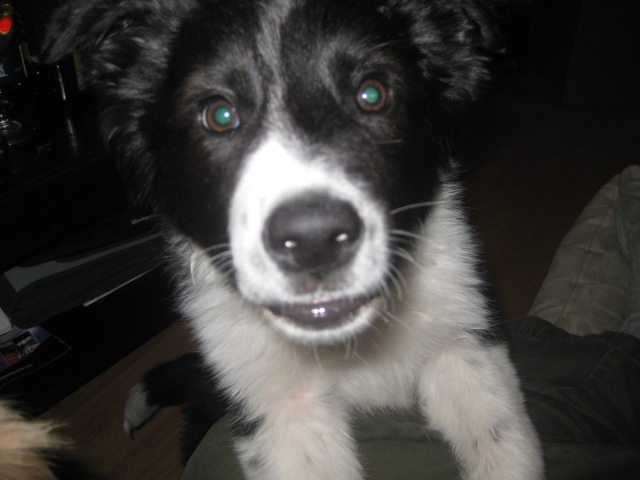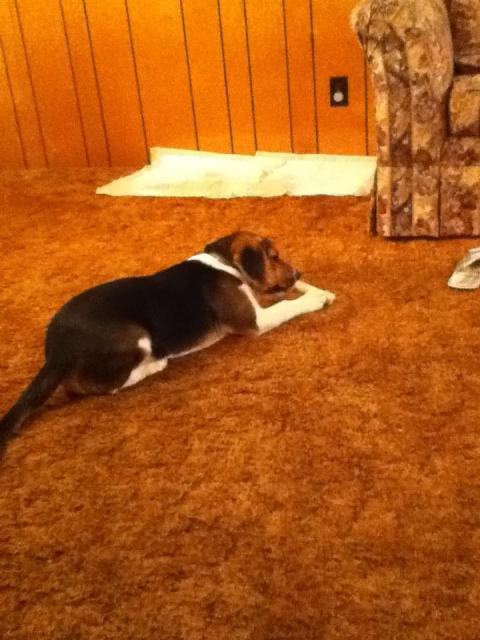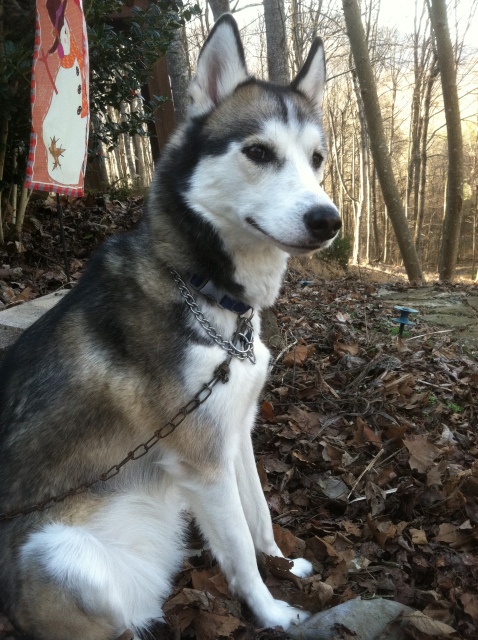QuestionHi! I have a 6 year old beagle and Ive been having promblems ever since i got her with that little nose hers always finding some kind of trail and running off. We would chase her down in the woods, or call her for a day one time she came home and needed to be rushed to the vet for stitches. Its mostly are fault. Are yard is not fenced, no electric fence and I have a little brother who always leaves the door open. It hasn't happened in a while but we still are very careful. I'm almost 13 actually and hope to be a dog trainer when I'm older and my dog listens and does very well in training we do 40 different tricks, k9 freestyle, obedience,and agility. I Have a area set up in the back mostly surrounded with bushes and rocks but one area is open and she could easly run off. Sorry, but the point is I want her to be able to train off leash in that area for offleash agility. Im always getting the leash tangled up in the weave poles and she can't go through the tunnels or the tire jump without me letting go of her lesh. I was wondering if I could rope off the area and somehow theach her to stay within the boundries. My parents say its way too expensive for a fence or electric fence.I want to be able to have this section for some fun agility but how?
Hope you can Help,
Emma
AnswerHi Emma,
First we'd like to say good luck on becoming a dog trainer. I (Beth) have had many different jobs, I have a college degree in biology, an advanced (graduate) degree in biology, and 2 years of medical school, but I have never enjoyed any job as much as dog training. Christopher went to school at Cornell Univ. to become a dog behaviorist. I recommend you read as many books on the subject as you can, volunteer at local animal shelters, work at vet clinics, and make sure you take psychology and animal behavior courses in college (education is crucial!). You can find some good articles at our website: www.downstay.com and at http://www.uwsp.edu/psych/dog/dog.htm
If you haven't tried clicker training yet, you might want to give that a try. Clickers are cheap to buy or you can use a metal bottle cap (the kind with the "pop-up" seal in the center") or something else that clicks.
As far as training your dog off-leash...
If you go to our website (downstay.com), you'll find the handouts that we use for our obedience classes. Begin by working through all the exercises we cover in those. Make sure you have a leash on your dog at all times though! The worst thing is for your dog to get away when you have no control. Every time that happens your dog gets the ultimate reward (freedom) which will reinforce that behavior (escaping). It will take a long time, a lot of work, and a boatload of patience for you to be able to trust her off-leash.
Your first goal should be to have your dog obey your commands EVERY TIME, the FIRST TIME you ask. There are a lot of ways to improve her response. One way is to use rewards to "shape" her behavior. Give commands one time with a clear voice. If she does not do what you ask (and she already knows how to), help her or better yet wait until she does. You can tell her "Good girl," but only give a treat (lots of praise, food, a toy, etc.) when she responds quicker. For example, if you ask her to sit and it takes her 20 seconds, tell her good girl and release her (end the command) with an enthusiastic "OK" (use this release for all commands and require her to hold her position until you release her). Ask her to sit again and if she responds in 10 seconds (still not great, but better than 20 sec), praise her, release her with "OK," and give her a reward. The pattern will always be command > dog responds > release with "OK" > reward (level depends on how well she responded).
One of the exercise is to teach her the recall ("Come") command. We recommend using a different word if "Come" has been used in the past. Owners frequently inadvertently teach their dogs that returning to them is a bad idea. They do this by saying "Come" when their dog is off-leash (dog learns that owner has no control and the command can be ignored). When they finally catch the dog, they yell at or hit the dog and put the dog on leash or in the house. The dog loses the ultimate reward of freedom on top of being punished physically and/or verbally. Why would they ever return in the future? To prevent the above scenarios, you need to 1) keep control with a leash, and 2) teach the dog that coming back is more rewarding than running free (difficult task). So, any time your dog comes to you praise her, give her treats, get down with her, and act silly. We use "Let's go" as our everyday command to get our dogs to come to us at times when we take them away from fun (coming into the house or leaving a dog park) and "Come" when it's absolutely critical that they return (running toward a busy street). This keeps the "Come" command special and improves the probability of them returning; it's always rewarding to return for "Come," but "Let's go" can mean a loss of freedom, etc.
To practice this command, put a long line (15 or 30 ft. leash/rope/line that allows you to reel your dog in if you're being ignored) on your dog. When your dog is away from you, squat down, say "Dog's Name, Come" (use "Here" or something else new if necessary). When dog looks at you, sweep your extended arm towards your body as you scoot backwards. When dog comes (use leash if needed), give lots of praise, treats, etc. As your dog improves, begin to practice this in distracting environments (park, in view of neighbor's cat, etc.) so your dog learns that she needs to ignore distractions and listen to you. Until she is VERY reliable at coming with a long line with distractions, she is not ready to work off-leash. This might take several months or a year depending on you and your dog. Until then, use a thin cotton rope with knots tied in it (to make it possible for you to step on it to stop your dog) when you practice agility. Perhaps you can get your younger brother to catch her at the exit end of the tunnel? He can also help practice "Come" by standing about 20 ft. away from you (you hold long line). He calls dog to him and gives praise and then you call dog to you. This is fun for the dog and helps her learn to come.
Good luck with the exercises and let us know if you need more help!
p.s. Read this link about letting your dog off-leash: http://groups.msn.com/REGAPofIllinois/trustadeadlydisease.msnw

 Running/Non-Obeying
Question
Star
I have a female Lab mix who has this obse
Running/Non-Obeying
Question
Star
I have a female Lab mix who has this obse
 Border collie help
Question
Miaya
Hi
We have a 16 week old border collie.
Border collie help
Question
Miaya
Hi
We have a 16 week old border collie.
 Housebreaking My Puppy and Choosing the Right Fencing
Question
Woody
Hello. I have a four month old be
Housebreaking My Puppy and Choosing the Right Fencing
Question
Woody
Hello. I have a four month old be
 Dog jumps on counters, Refrigerator,cabinet tops when Im not home
Question
Bell
Hello,
I dont even know where to
Dog jumps on counters, Refrigerator,cabinet tops when Im not home
Question
Bell
Hello,
I dont even know where to
 Is putting my dog in a cage a good form of punishment?
Question
Blue
My Siberian husky, Blue, as been b
Is putting my dog in a cage a good form of punishment?
Question
Blue
My Siberian husky, Blue, as been b